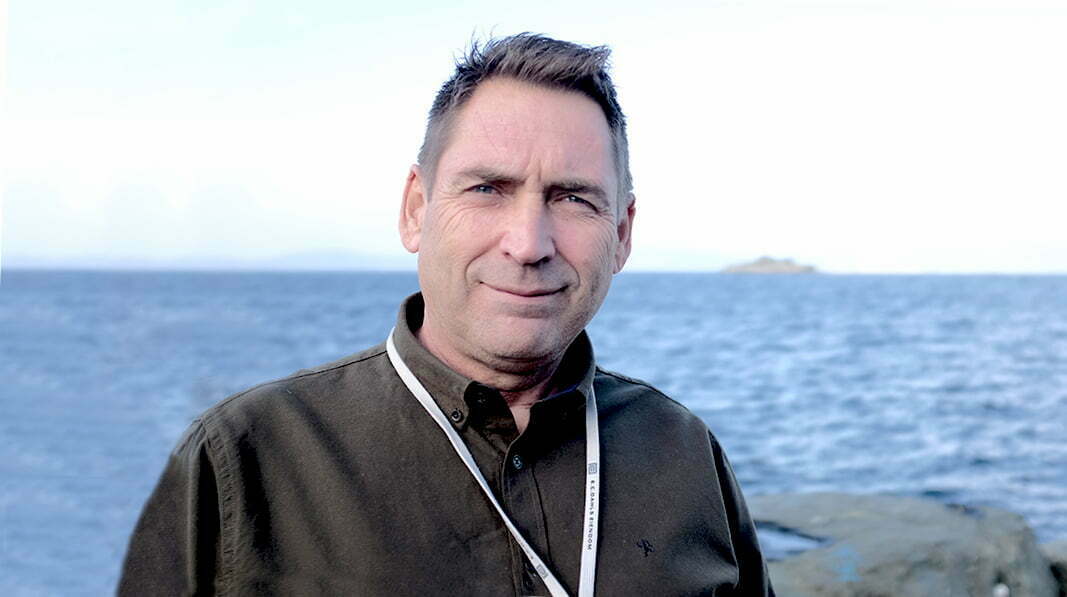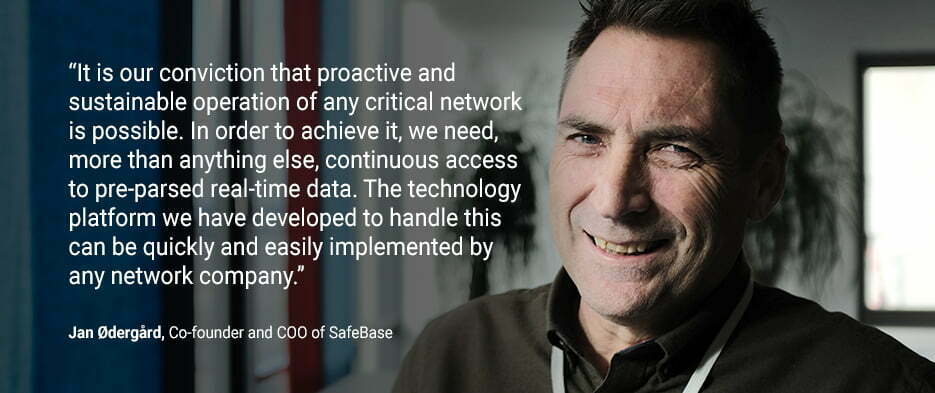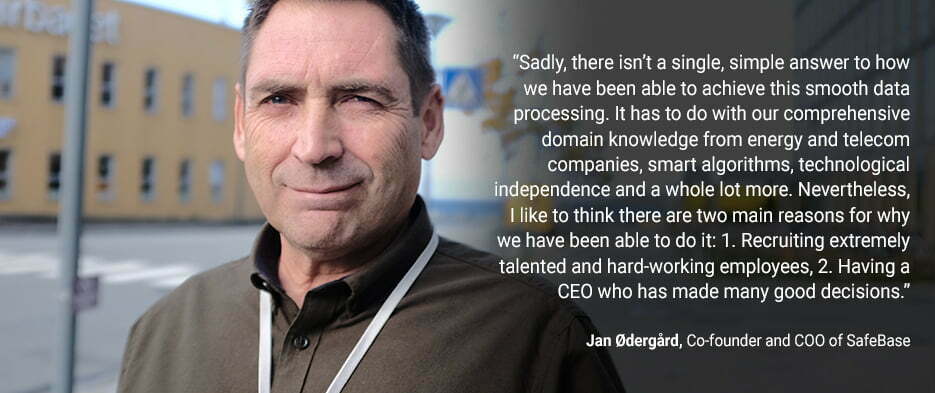Proactive operations: Why it is profitable, and how it is possible
The right kind of monitoring of your distribution network will allow you to be proactive and sustainable in your operations — always ready for any challenge or opportunity. In order to stay one step ahead of the curve, you need real-time status updates for your entire network — which in turn require real-time monitoring and presentation of vast quantities of data.

Co-founder and COO of SafeBase, Jan Ødegård, explains how and why SafeBase has systematically worked toward what he believes is the gold standard for decision support for professional distribution network operators.
Learning from phone network operations
SafeBase was founded by former Telia employees. From our time with this pillar of the telecom industry, we had a clear idea of how to monitor a network in order to operate sustainably — that is to say, operating in a way that predicts future challenges, enabling us to make investments and correct errors in the right place at the right time.
“It is our conviction that proactive and sustainable operation of any critical network is possible. In order to achieve it, we need, more than anything else, continuous access to pre-parsed real-time data. The technology platform we have developed to handle this can be quickly and easily implemented by any network company.”
These are the words of Jan Ødegård, who was one of SafeBase’s founders in 2013. Since then, several major telecom companies and regional power companies all over the country [1] [2] [3] [4] have chosen SafeMon to prevent service interruptions and loss of quality in their networks.
“Some day, this will be standard operation for any distribution network operator. Luckily, our solution is scalable for both the number of customers and the number of devices connected to the network,” Jan says.
What do we mean by ‘proactive operations’?
The definition of proactive operations is to intervene now to prevent something from occurring in the future. The downside to this approach is that infinite time and money can be spent trying to prepare for any and all eventualities down the line. This is where SafeMon comes in.
By having all the details about everything going on right now, while also being able to compare the current state with historical data, it is easier to spot where the next challenge is going to crop up. That means you’ll be prepared when it happens, or you can take action now to prevent the problem entirely.
“In the telecom world, the worst problem to have is dissatisfied customers— as you know, mobile service customers are not particularly loyal. If your customers are not happy, they will switch to your competitor sooner or later. In order to keep customers happy, we collect vast quantities of data from the mobile network on the customers’ perceived quality. By identifying problems before they become noticeable for customers, you’ll be able to improve your network before your customers leave,” he says.
“Our electrical power network is among the most reliable in the world. We can see that our customers dedicate considerable effort and investments to making sure we have as few outages as possible, with the shortest possible durations when outages do happen. By collecting vast quantities of real-time data from components in the power network, we can see that our customers are able to prevent many problems before they happen, while also making sure that upgrades are made where they will be most useful,” Ødegård points out.

Three-second rule
One common feature of all critical infrastructure is that the networks are large, complicated and contain extreme quantities of data. Nevertheless, all presentations, graphs and reports in SafeMon will be available at most three seconds after the user has clicked the relevant button in the browser-based tool.
Read more: Remote monitoring of transformer stations [in Norwegian]
Moving mountains as if they were gravel
Being able to pull in data from an entire telecom or power network, reworking this data to readable and comparable figures, and then generating user-friendly visualizations in a mere moment sounds too good to be true. So how is it possible to move and process mountains of data this way — every second of every day, year-round?
“Sadly, there isn’t a single, simple answer to how we have been able to achieve this smooth data processing. It has to do with our comprehensive domain knowledge from energy and telecom companies, smart algorithms, technological independence and a whole lot more. Nevertheless, I like to think there are two main reasons for why we have been able to do it: 1. Recruiting extremely talented and hard-working employees, 2. Having a CEO who has made many good decisions.“

Domain and technological expertise
Jan explains that the employees’ expertise on the domains they focus on is essential in continuously developing and refining SafeMon in a way that adds value for users. In addition, the team has expert knowledge of machine learning, databases, statistics, engineering, and so much more. Also, at the core of it all, the entire team has an unwavering faith in the proactive and sustainable operation of distribution networks.
Creative CEO
Ødegård believes many things would be different if CEO Lars Erik Gjervan had not, in the early phases of this project, identified the need for a simple means of collecting data from large networks and started looking for a solution to this problem.
“When he couldn’t find the technology in the market, he developed it himself. SafeMon SensorHub has become the key to extracting data from transformer stations and base stations, all the way up to the cloud. Not only is this an excellent example of how we constantly look for solutions — it’s also a good illustration of how important it is to have hardware expertise in addition to IT and software expertise.”
Proactive and sustainable operations
Based on customer-oriented innovation and weekly software updates, SafeBase plans to continue building the best tool for operational support — for today and tomorrow. The goal is for customers to be able to perform their societal functions in the best possible way — both in the short term and the long term.
“Proactive and sustainable operation simply means both to prevent errors and to correct any errors we cannot prevent — so that the population does not experience any loss of critical services, such as telecom and electrical services. In addition, network operators can use our tools to assess when they should be investing in new equipment and perform repairs, and also how to prioritize this type of work in the long term.”
[1]https://safebase.no/sogn-og-fjordane-energi-har-valgt-safemon-nettstasjonsovervaking/
[2] https://safebase.no/ringeriks-kraft-nett-gar-for-safemon-nettstasjonsovervaking/
[3] https://safebase.no/voss-energi-velger-avansert-nettstasjonsovervaking-fra-safebase/
[4] https://safebase.no/simulerer-fremtidens-utfordringer-i-stromnettet/

